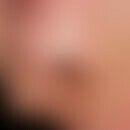Synonym(s)
HistoryThis section has been translated automatically.
IN Dubin and FB Johnson 1954
DefinitionThis section has been translated automatically.
Benign, autosomal recessive hereditary with nonpruritic hyperbilirubinemia, caused by an excretion disorder of the bilirubin (conjugation is normal - see laboratory below) of the adolescent or early adult.
You might also be interested in
Occurrence/EpidemiologyThis section has been translated automatically.
Can be proven in all ethnic groups. More common among Iranian and Moroccan Jews (Shani M et al. 1970).
EtiopathogenesisThis section has been translated automatically.
Caused by autosomal recessively inherited homozygous mutations in the Canalicular multispecific organic anion transporter gene also called CMOAT gene (or ATP-binding cassette subfamily C member 2 gene; ABCC2) which is located on chromosome 10q24. The ABCC2 gene codes for an ATP-dependent transporter in the apical membrane (multidrug resistance-associated protein 2 - MRP2) which enables the efflux of glucuronated bilirubin and other organic anions from the liver cell into the bile ducts.
ManifestationThis section has been translated automatically.
Adolescence, Adulthood
ClinicThis section has been translated automatically.
Patients become conspicuous in adolescence or early adulthood by a mild to moderate non pruritic jaundice. Frequently intercurrent infections, pregnancy (Gupta A et al. 2019) are the triggering factors. Also oral contraceptives or medication. During the episodes there is sometimes abdominal pain and fatigue, in rare cases hepatosplenomegaly develops.
ImagingThis section has been translated automatically.
Ultrasound findings of the liver: unremarkable
Diagnostically useful may also be the 99mTc HIDA cholinescintigraphy, in which the gallbladder and bile ducts are visualized delayed or not at all, while the liver remains visible for a prolonged time.
LaboratoryThis section has been translated automatically.
Total serum bilirubin (50-80% detectable as conjugated bilirubin) moderately increased (2.0-5.0 mg/dl, very rarely higher. Liver enzymes (aminotransferases, alkaline phosphatase, gamma-glutamyl-transpeptidase), albumin level and prothrombin time: normal.
Especially in the population of Iranian and Moroccan Jews an association with coagulation factor VII deficiency can be observed.
Detection of a characteristic coproporphyrin excretion pattern (normal concentration of total coproporphyrin when the proportion of coproporphyrin-1 is increased to more than 80%).
HistologyThis section has been translated automatically.
Black-brown, melanin-like pigment deposits in the hepatocytes, mainly in the centrilobular area. No further histological changes.
DiagnosisThis section has been translated automatically.
Detection of mutations in the ABCC2 gene. liver biopsy.
Differential diagnosisThis section has been translated automatically.
- Gilbert-Meulengracht disease
- Crigler-Najjar syndrome
- Rotor syndrome
- Hepatitis
- Hemolysis
- Malformations of the bile ducts
TherapyThis section has been translated automatically.
A curative therapy is not known. Phenobarbital led in some cases to a decrease in serum bilirubin levels.
Progression/forecastThis section has been translated automatically.
No signs of progression. No evidence of the development of liver insufficiency, cirrhosis or fibrosis.
LiteratureThis section has been translated automatically.
- Gupta A et al (2019) A Case of Dubin-Johnson Syndrome in Pregnancy. Cureus 11:e4048.
- Kularatnam GAM et al (2017) Dubin-Johnson syndrome and intrahepatic cholestasis of pregnancy in a Sri Lankan family: a case report. BMC Res Notes 10:487.
- Shani M et al (1970) Dubin-Johnson syndrome in Israel. I. Clinical, laboratory, and genetic aspects of 101 cases. Quart J Med 39: 549-567
- Strasbourg CP (2010) Hyperbilirubinemia syndromes (Gilbert-Meulengracht, Crigler-Najjar, Dubin-Johnson, and Rotor syndromes). Best Pract Res Clin Gastroenterol 24:555-571.
Outgoing links (5)
Bilirubin; Crigler-najjar syndrome; Hemolysis; Icterus intermittens juvenilis Meulengracht; Gilbert-Syndrom; Morbus Meulengracht; Gilbert-Meulengracht-Syndrom; ; Virus hepatitis;Disclaimer
Please ask your physician for a reliable diagnosis. This website is only meant as a reference.




